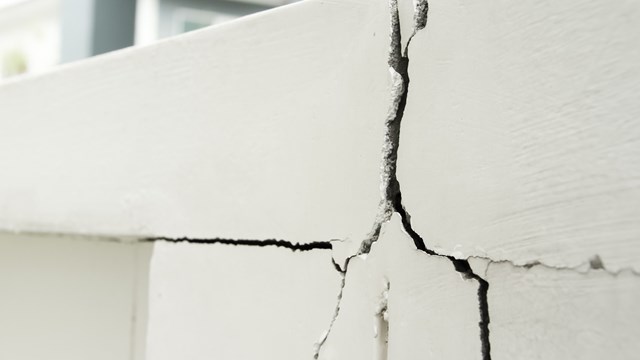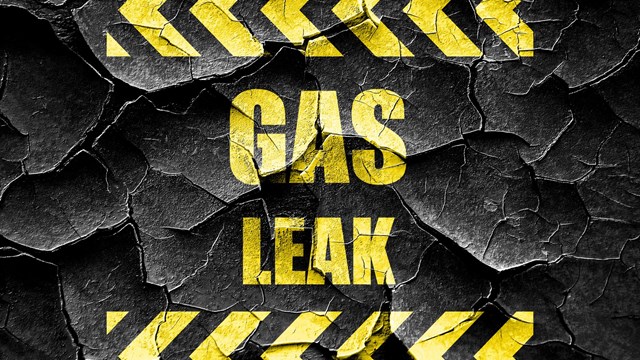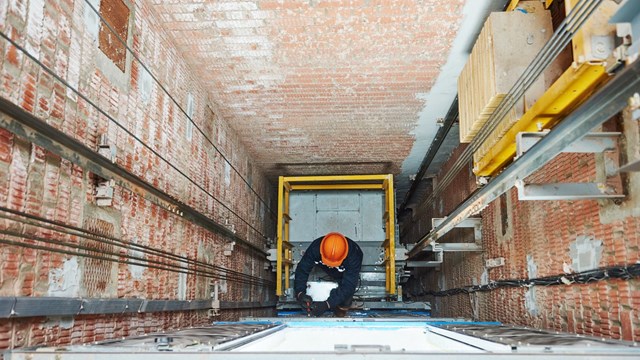Twenty years ago, Lisa Collier Cool was sleeping in her 14th floor apartment on West 72nd Street in Manhattan when her dog began barking. Not wanting to get up, Lisa tried to go back to sleep, but the dog was adamant and continued. Lisa awoke to find her room filling with black smoke. Rushing to escape a potentially deadly situation, she opened her front door, but the hallway was even smokier. She decided to stay put until the fireman came to the apartment, which they did a short time later, rescuing both Lisa and her dog.
Later, she found out that an overloaded electrical socket in a third floor apartment sparked the fire. “I just wish my building had offered some sort of a plan,” said Cool, who now lives in Westchester. “We didn’t know what to do in case of an emergency.”
Early Detection
Fortunately, times have changed and buildings are more readily prepared for such emergencies. According to statistics compiled by the New York City Fire Department (FDNY) website, there were 2,544 structural fires in the five boroughs during October of 2005 alone. To help alert residents of the danger, or help them to neutralize the danger should it ignite, it’s imperative that buildings are equipped with the right emergency products.
Today, residential buildings have – or should have—evacuation plans that are reviewed and practiced on a regular basis, as well as smoke detectors installed in hallways and lobbies. For residents, it’s hopefully now common knowledge that every apartment and home should be equipped with at least one fire extinguisher, smoke detectors and (more recently) carbon monoxide detectors.
However, although Local Law 7 of 2004 requires the installation of carbon monoxide detectors in all new and existing buildings, they only have to be placed within individual residential units, and are not required in the lobby or building corridors, hallways or stairwells. Some units in buildings without fossil fuel burning furnaces or boilers may be exempt from this requirement.
“How many smoke detectors and fire extinguishers a building should have all depends on the building,” says David Billing, a spokesperson for the FDNY. “The regulations will change depending on several factors – the size of the building, and whether the building is fireproof or not fireproof, for example.”
Reducing Risk
Fireproof buildings include various mechanisms to help control or maintain fire, including being built with brick and steel materials and self-closing mechanisms on apartment and stairwell doors to help contain the fire.
According to Michael Sheehan of Life Safety Associates, a San Diego, California-based consulting firm that specializes in emergency preparedness, residents and building managers should also consider several other supplies and basic pieces of emergency equipment to have on hand, including insulated fire blankets and oxygen hoods. Fire blankets are useful for smothering flames or treating shock victims. Escape hoods increase the chances of surviving a fire or bacteriological emergency. They fit over evacuees’ heads and typically provide around 20 minutes of breathable air to allow residents precious time to evacuate.
“Complying with local fire ordinances is the utmost importance,” says Sheehan. “Equipment such as the sprinkler system, standpipe system, fire alarm, public address system, fire department connections and emergency power systems should be clearly marked, well-maintained and tested frequently. And you should have a systems checklist in place to insure that this gets done.”
Sheehan also recommends that residents who are physically challenged or chronically ill—or the boards of their buildings—consider investing in alternative assistance devices that can help speed the evacuation process for those less physically able to escape the hazard. Products like the Folding Stair Chair help physically challenged individuals move through narrow hallways, tightly confined spaces or twisting stairways. While these devices don’t come cheaply—the Stair Chair retails for around $695—they can prove invaluable in times of crisis.
Lighting the Way
Trying to maneuver through a darkened building or stairwell can be thorny in an emergency, but thanks to recommendations made by the World Trade Center Building Code Task Force after the tragedies of 9/11 and the subsequent mayoral task force that examined the Blackout of 2003, that quandary may soon be a thing of the past.
Sixteen recommendations were made for changes in New York City buildings, including such safety precautions as reinforcing elevator shafts, providing backup batteries for smoke and carbon monoxide detectors and installing luminescent signs to light the hallways and stairwells to help point the way to safety. Out of these 16 recommendations, 12 were adopted last June that were called Local Law 26.
This New York City local law requires certain high-rise buildings to mark their emergency evacuation stairwells with high-intensity photoluminescent (that’s glow-in-the-dark) markings and signs. Under the law, all existing Class E commercial properties standing 75 feet or higher are required to install in their evacuation stairwells on doors to exists, corridors that serve as exists, landings, handrails and more. The signs must be visible if there is a blackout, and installation must be completed by July 1, 2006.
“There are new regulations mandated for New York City buildings with different deadlines per building,” says Steven Suen, president of SafeSign Corporation in Los Angeles, California, one company that supplies emergency lights to New York buildings.
“After this phase is done, it’s expected that the next phase, which may begin from early to mid next year, will be installing these lights in residential buildings,” Suen continues.
SafeSign utilizes a special high-performance phosphorescent pigment called strontium aluminate, which is capable of absorbing light from all common light sources and storing this energy within its material structure—very much like a rechargeable battery.
Under total darkness, signs treated with strontium aluminate convert previously stored energy back into light over the course of several hours, resulting in full illumination independent of any light source. The material is non-radioactive, non-toxic, chemically and thermally stable, and environmentally friendly. It can be fully charged in as little as 10 minutes, and stay charged until the surrounding area darkens. It can be charged for an unlimited number of time, and has no memory effect for recharging, as commonly found in rechargeable batteries.
“In a power outage or non-fire emergency, [these signs] provide enough time to evacuate the residents of the building,” says Suen. “In a fire, it’s still important to remember that while the stairwell might still be illuminated, the walls may be getting hot and eventually the fire can get worse, so you need to evacuate quickly.”
Safe at Home
After last year’s blackout, a lot of media attention was paid to the importance of preparing individuals and families in case of another such emergency. While there’s no law requiring building boards and management to provide residents with survival gear and supplies, well-stocked, well-prepared shareholders and unit owners can only make the manager’s job easier in a time of crisis.
According to Kate Adler, a spokesperson for American Family Safety, a web-based company that provides emergency preparedness materials, “Being prepared is the best way to survive any emergency, and that includes having a preparedness plan and kit for where you work and live. Having both can definitely help building managers, residents and tenants survive in the event of a power outage, building fire or other unexpected emergencies.”
According to Adler, a good emergency kit should reflect the recommendations of the Department of Homeland Security, and include survival items such as drinking water, a flashlight and fresh batteries, a water-resistant battery-operated AM-FM radio, and a mylar emergency blanket, among others.
Other Advances
In addition to smaller items like fire extinguishers and emergency supply kits, some engineers in the disaster preparedness field are working on other ways to lessen the cost of crises. Some of them are downright futuristic. In October of 2005, the Department of Homeland Security certified a mass exterior evacuation system designed for use in skyscrapers, called the Escape Rescue System, or ERS.
The ERS is an innovative external solution for the both evacuation of building tenants and quick transporting of rescue personnel to upper floors. The building-wide system is composed of “arrays” of five collapsible cabins, each spaced to coincide with a building’s individual stories. The system is permanently stored on the roof in a folded position, and also includes rooftop storage and deployment devices, an independent power source, command and control mechanisms, and systems for drive and wind stabilization. The system also requires reconfigured windows on each floor that can be opened and converted into boarding ramps for the array cabins.
In an emergency, each array is lowered to the ground and unfolded, enabling emergency responders to board the cabins. The array then travels upwards until it’s in line with the upper floors, enabling up to 600 occupants to enter through specially configured exit windows (150 people from 5 floors into each array). Each array is then lowered to the ground and tenants exit as it refolds. The system repeats this cycle, transporting responders up and into the building and evacuating tenants until everyone is out and accounted for.
Although the prototype ERS was developed for large commercial buildings, ERS founder and CEO Jonathan “Yoni” Shimshoni says that the product is being revised for residential buildings.
“We have already begun the process of scaling the Escape Rescue System to residential buildings,” says Shimshoni. “The reason for scaling is because the population density on a given residential floor compared to a commercial building is much smaller. You don’t need to evacuate as many people, so you can work with probably 35 to 40 percent of the bigger system’s [power capabilities.]”
According to Shimshoni, downscaling the ERS for residential buildings means scaling down the system’s hefty price tag—which can run as much as $2.5 million for a 40-story office building—as well. “Once we scale the system down for residential use, it will reduce the cost substantially,” says Shimshoni.
Preparedness is Best
In addition to the stalwarts like fire extinguishers and CO detectors, new products are constantly coming on the market—both to help avoid emergencies and reduce the human and material cost when they do arise. While your building may not be in the market for a sophisticated escape system like the ERS just yet, it’s definitely to your advantage to assess your vulnerabilities, inspect your existing detection and mitigation equipment, and take steps to fill in any gaps. If your board/management team could use some pointers or ideas on where to start, you can visit the New York City Fire Department website at www.nyc.gov/fdny or call 311.
Lisa Iannucci is a freelance writer and frequent contributor to The Cooperator.










Leave a Comment